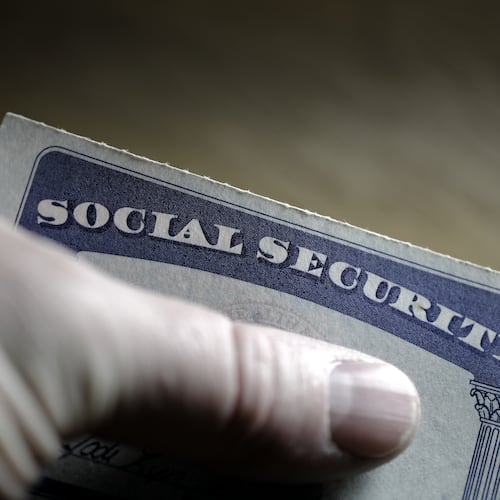One week after the nation and the world was rocked by a violent, deadly protest at the U.S. Capitol, the Democrat-led House of Representatives voted Wednesday afternoon to impeach President Donald Trump for the second time.
Watch a replay of the impeachment proceedings:
Trump is the first American president to be impeached twice. He was impeached by the House in late 2019 and acquitted by the Senate in February 2020 on two charges: abuse of power and obstruction of Congress. The GOP-led Senate acquitted Trump on both charges. Prior to Trump, only two presidents had been impeached, Andrew Johnson and Bill Clinton. Both were acquitted by the Senate.
After about three hours of procedural debate Wednesday morning, the House began two hours of debate on a single article of impeachment, which can be read here. Voting began shortly before 4 p.m.
The final vote tally was 232-197. Ten Republicans supported the measure, titled House Resolution 24, and no Democrats opposed it.
Trump released a video message after the historic House vote.
The impeachment charge — authored by U.S. Reps. David Cicilline of Rhode Island, Jamie Raskin of Maryland and Ted Lieu of California — alleges Trump incited the violence that led to the death of one Capitol Police officer who died from injuries suffered in the riot, and the shooting death of another protester. Three other people died in what authorities said were medical emergencies.
The unprecedented second impeachment of an American president came without hearings, witnesses or testimony. Trump’s first impeachment in the House happened after weeks of preparations among top Democratic leaders, including House Speaker Nancy Pelosi and Adam Schiff of California, who was the lead House impeachment manager.
Republican Congressman Jim Jordan read a statement from Trump on the House floor during the debate.
“In light of reports of more demonstrations, I urge that there must be no violence, no lawbreaking and no vandalism of any kind,” Trump’s statement read. “That is not what I stand for, and it is not what America stands for. I call on all Americans to help ease tensions and calm tempers.”
Trump is set to leave office on Jan. 20 with the inauguration of President-elect Joe Biden. While Democrats are arguing Trump is a threat to democracy, their main goal in this latest impeachment effort could be to ensure Trump never again seeks or holds elected office. For that to happen, the Senate must convict Trump in an impeachment trial after he leaves office, which has never happened before. Also, no sitting or ex-president has ever been convicted in a Senate impeachment trial, which requires a two-thirds majority.
If the Senate convicts Trump — presumably during a trial later this year — it could then, by simple majority, vote to disqualify him from serving in a future federal office.
As debate continued on the House floor, Reuters reported Senate Republican leaders were discussing the possibility of beginning a trial to remove Trump from office on Friday. However, Senate Majority Leader Mitch McConnell reportedly told Minority Leader Chuck Schumer he will not reconvene the Senate before Jan. 19, the day before Biden’s inauguration.
Before proceeding with impeachment, the House pressed Vice President Mike Pence and the Cabinet to remove Trump more quickly with only seven days remaining in his term, with warnings he is a threat to democracy in the last days of his presidency.
The House approved a resolution late Tuesday calling on Pence and the Cabinet to invoke the 25th Amendment to the Constitution to declare the president unable to serve.
Pence, who was among those forced to take shelter inside the Capitol complex during the attack, said before the vote that he would take no such action.
“President Trump gravely endangered the security of the United States and its institutions of Government,” reads part of the four-page impeachment bill. “He will remain a threat to national security, democracy and the Constitution if allowed to remain in office.”
Pelosi said impeachment is needed despite the limited number of days left in Trump’s term. “The president’s threat to America is urgent, and so, too, will be our action,” she said.
Trump’s actions were personal for Pelosi and many other lawmakers. She was among those forced to huddle in a bunker during the Capitol riots, and armed rioters menaced staffers with taunts of “Where’s Nancy?”
Unlike the last time Trump was impeached, when no House Republicans supported charges against Trump over a call he made to Ukraine’s new president, the current impeachment effort has drawn support from some Republicans.
House Minority Leader Kevin McCarthy of California and his deputy, Louisiana Rep. Steve Scalise, are again expected to oppose impeachment, but Wyoming Rep. Liz Cheney, the No. 3 House Republican, said Tuesday she will support it.
Cheney, whose father, Dick Cheney, served as vice president under George W. Bush, has been more critical of Trump than other GOP leaders. She said in a statement Tuesday that Trump “summoned” the mob that attacked the Capitol, “assembled the mob and lit the flame of this attack.” She added: “Everything that followed was his doing” and noted that Trump could have immediately intervened to stop his supporters from rioting but did not.
Reps. John Katko, R-New York, and Adam Kinzinger, R-Illinois, also said they would back impeachment, and some other Republicans followed.
McCarthy, one of Trump’s closest allies in Congress, echoed Trump in declaring that “impeachment at this time would have the opposite effect of bringing our country together.”
In a move short of impeachment, McCarthy and other Republicans have floated the idea of a House censure of Trump. Although it was not clear how much support the proposal has, McCarthy said censure or some other mechanism — such as a bipartisan commission to investigate the attack — would “ensure that the events of Jan. 6 are rightfully denounced and prevented from occurring in the future.’'
On Tuesday, in his first public comments to reporters after last week’s riots, Trump said, “People thought that what I said was totally appropriate.”
In the days leading up to the Jan. 6 certification vote, Trump encouraged his supporters to descend on Washington, D.C., promising a “wild” rally in support of his unsubstantiated claims of election fraud.
Speaking for more than an hour to a crowd assembled near the White House, Trump encouraged supporters to “fight like hell” and suggested they march down to the Capitol to encourage GOP lawmakers to “step up” and overturn the will of voters to grant him another term in office.
In a sign of the increased tensions in the wake of the attack, House lawmakers were, for the first time, be required to go through a metal detector before being allowed to enter the chamber.
This new security measure will stay in effect every day the House is in session for the foreseeable future, according to a directive by Timothy Blodgett, the acting House sergeant-at-arms. Blodgett replaced the longtime sergeant-at-arms who resigned after widespread criticism about poor security planning for the Jan. 6 certification vote.
Members of Congress have previously enjoyed nearly free roam at the Capitol, able to bypass security screening stations at most entrances to the building. In the House chamber, there have been Capitol Police officers and civilian door monitors but no screening stations.
Blodgett also told lawmakers they must wear masks during the COVID-19 crisis and that they face removal from the chamber if they fail to do so.
While debate on the House is often impassioned, emotions are expected to run unusually high as lawmakers debate impeachment. Not only is it the second time they have voted on such a measure, the debate comes exactly one week after a majority of House Republicans objected to the certification of Biden’s victory, setting the stage for the hourslong siege that rocked the Capitol and the nation.
The Associated Press contributed to this report.
About the Author
The Latest
Featured



